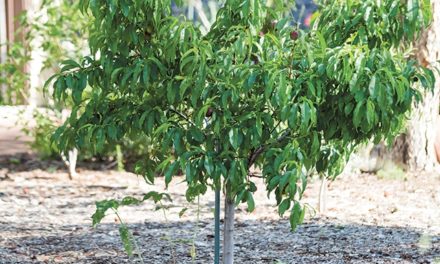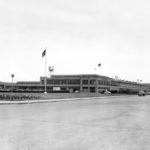The popular dog park was once nicknamed Battery Park. The East Bay Regional Park District is looking into why.
Before it was land, it was a marsh. Then it became a landfill. It’s the origin story of most of the East Bay’s shoreline parks. Point Isabel in Richmond is no different.
Over the years, an enormous effort has made been made to snuff out the land’s industrial past, but every now and then, it bubbles up to the present. Earlier this year, the East Bay Regional Park District discovered lead contamination in the northern part of the Hoffman Channel, the waterway that separates the park’s twin peninsulas. In some ways, it wasn’t surprising. For much of the 20th century, North Point Isabel was a landfill — a veritable dumping ground for construction debris and lead-filled battery casings.
But all of that was supposed to have been taken care of years ago. In cleanup efforts during the ’80s and ’90s, thousands of tons of soil were removed from the site. The waste was sealed off by a thick cap of clay and subsequently covered with earth.
The surprising part? The park district doesn’t know where the recent lead leak came from.
“The landfill isn’t leaking. The cap is still good,” said Robert Doyle, the park district’s general manager. While the land is technically owned by the state, Doyle’s agency oversees the park’s day-to-day operations.
Doyle has theories about the leak. He thinks it could be an undiscovered battery casing — “a 2-by-2-inch thing of battery casing” — that was at some point missed during the cleanup. But that’s speculation. “It should have been addressed as part of that original remediation,” Doyle said. “Now we’re like, ‘how come what’s showing up is showing up?’”
While the mystery remains unsolved, the park has fenced off certain areas of the park from visitation. Doyle said his first priority is keeping dogs and people safe. Most of the park, he said, remains open to the public and is safe to visit.
“They do a very responsible job of testing the soil. I don’t think they would let people out there if there was a hint that they would pick up lead on their dog’s paws or something like that,” said Mary Barsndale, a board member of the park’s citizen group, Point Isabel Dogs Owners and Friends, or PIDO.
Barnsdale said she recognizes that such incidents just come with the territory. Her perspective is informed by years of research and also personal experience.
She remembered well the day when she first decided to venture across the Hoffman Channel. It was a warm, windless day nearly four decades ago — back when the park was better known as a coy spot for drug deals than a cool place to walk dogs. The southern half of Point Isabel, adjacent to the USPS facility, has been a public park since 1975, when the federal government gave the land to the state. But North Point Isabel remained owned by Santa Fe Railway — and its subsidiaries — until the 1990s. It was under the custodianship of Santa Fe that part of the shoreline that faces Hoffman Bay earned its ominous nickname, “Battery Point.”
After traipsing through tall weeds, rubble and construction debris, Barnsdale and her border collie mix reached the shoreline. “It was kind of post-apocalyptic,” Barnsdale recalled. Then she felt something shifting beneath her feet. She noticed Bear, the border collie, was standing on plastic battery casings. They were everywhere. That’s when she realized that she might be walking on toxic waste.
Later, her suspicion was confirmed when Barnsdale stumbled upon a 1986 report by the California Water Quality Control Board. It was a dumping ground for “lead-acid storage battery casings” and “other unspecified fill material.” There was also zinc. In other words, she and her dog had been walking around in toxic waste. “I had a flash of horror,” she said. They high-tailed it out of there.
Thinking back, she’s struck by her own naivety about the world around her. “It was before there was such awareness, at least in me, that there were toxic things just laying around,” Barnsdale says. It was her Silent Spring.
Throughout the 1990s, North Point Isabel avoided several efforts at privatization. Plans to turn it into a golf course or housing development failed in the face of public opposition. Eventually the land was purchased by the state, becoming part of the McLaughlin Eastshore State Park in 2002.
In the years since, the number of people who visit the park has soared. The park district estimates that roughly one and half million people visit the park each year, three times as many as estimated a decade earlier. During that span, the park has taken on several efforts to accommodate more users. There are more restrooms and walkways than there were before and more stations to withdraw poop bags from. The park district recently began construction on a new walkway and ramp — for windsurfers and kayakers — near the park’s entrance. They’re also repainting the parking lot to create diagonal parking stalls, allowing more people to park.
Other than the fence along the channel — and a few other small closures — the park largely remains open. But that could also change.
According to Doyle, finding the source of the lead could require the park district to dig up parts of the gravel path that circles the landfill on North Point Isabel, which would cost millions. He also said that the local water district is concerned about the increased foot track that has worn down much of the grassy cover that sits on top of the old landfill. Re-seeding that area to meet regulations could require the park to close at least some of the area off to the public.
Doyle is proud of the work his organization has done with the shoreline, but he recognizef that upkeep continues to present its unique set of challenges. “We know that you’ve got to monitor all these landfills and you’ve got to maintain the caps,” he says. “That just comes with the territory.”
















